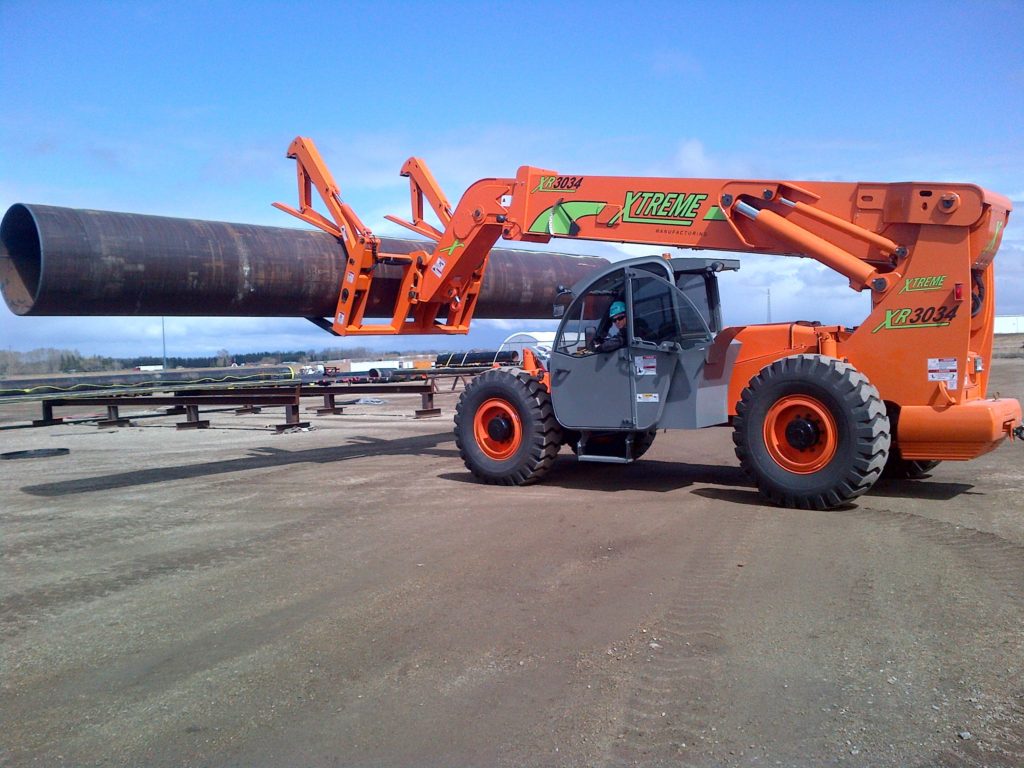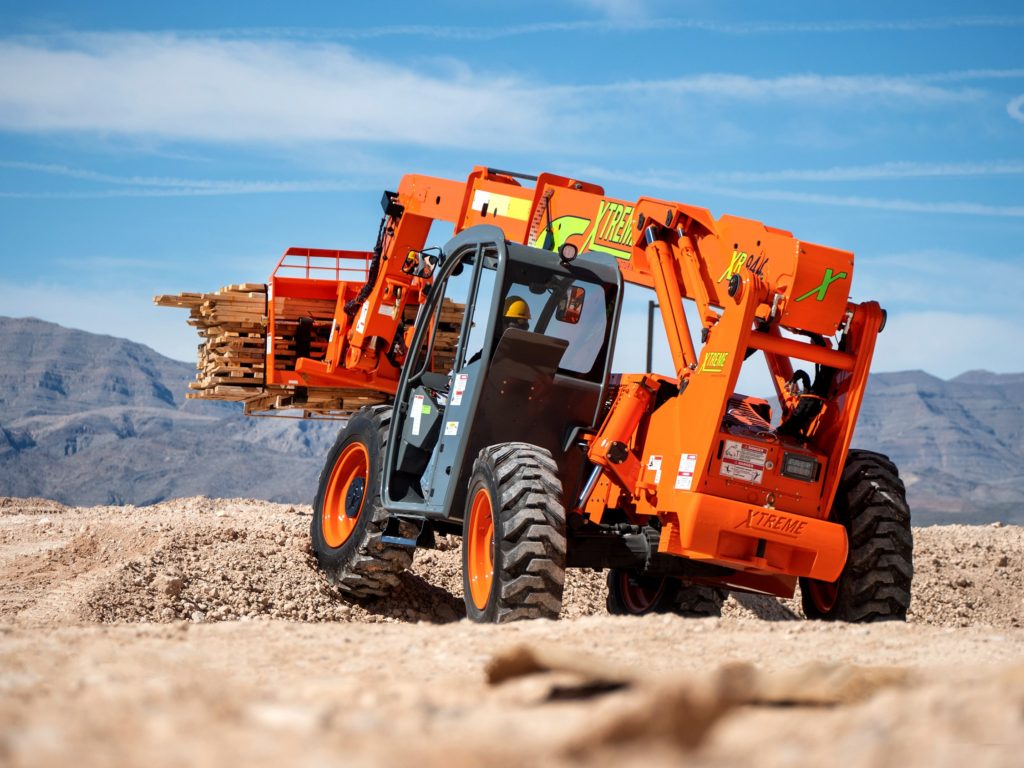Words and Photos: Tiffany Pace, Xtreme Manufacturing and Snorkel
Whether buying or renting, selecting the right telehandler for the job involves a lot more than its ability to lift the load. To ensure that you’ve chosen a machine that will perform as safely and efficiently as possible, consider a variety of factors that contribute not only to performance but overall cost as well.
But first, yes, the load.
While the maximum load capacity is a good place to start, there are lots of related factors and features that will directly affect productivity and safety on the jobsite. So once you’re clear on the weight of the loads you’ll be lifting on a regular basis, consider the physical size of the load, the lift height, and lift reach as well.
The size of the load will affect the load center, which determines whether the machine is suitable to lift the load. Also, consider how the machine engages the load; if the load is palletized, forks may be sufficient. If not, an attachment like a bucket or sling mount may be required.
Lift height and reach are critical to the machine’s suitability for a particular job but must also be considered relative to the load weight. The further up or out the load is lifted, the lower the maximum capacity becomes. The load chart attached to every telehandler will specify these limitations, as will a conscientious sales or rental representative, which is why it’s important to have a clear understanding of your jobsite’s specific needs and convey these to the professional who is helping you choose the machine that will best fulfill those needs.

Also, consider where loads will be placed specifically, as well as the surrounding environment at large. Whether the load’s landing area is a concrete tarmac or it’s axle-deep in mud — or somewhere in between — the terrain will determine what model telehandler should be used, as different surfaces require different tires and varying levels of traction control. Additionally, be aware of the size of the telehandler relative to its working environment; if the jobsite is a congested space, a compact machine may be necessary. Trying to shoehorn a machine into a workspace that’s too small can result in inefficiency at best and unsafe conditions at worst. If the telehandler will be traversing across or along public roads with other vehicles, consider a lighting package that includes brake lights and turn signals as well.
In order to maximize a telehandler’s overall value, think about the factors that will enable the machine to be used year-round. Often that means features that will keep the operator comfortable for long periods of time in any weather conditions. So whether that means an open cab in California, a closed and air-conditioned cab in Texas, or a heated cab in Alaska, choose the features and specifications that will best suit the climate and provide the most comfort. Additionally, think about options that will allow the equipment to be used around the clock, such as extra light packages that will facilitate safer and more efficient operation at night.
The overall cost of ownership is always a consideration when buying versus renting, and one factor that largely contributes to that equation is downtime. This may be the most expensive yet overlooked cost when it comes to the life of the machine. Usually, when a machine is in the shop, the result is either lost productivity or the cost of renting a replacement machine. To help prevent breakdowns, look for telehandlers whose manufacturers have prioritized ease of maintenance in the design of their machines.
Xtreme Manufacturing has taken maintenance into account on its line of telehandlers in the form of protected cylinders, sliding engine covers for easy access, and roller booms as opposed to wear pads that must be replaced. But regardless of the machine brand, familiarize yourself with what is required by the manufacturer to keep the machine in peak operating condition, and develop and adhere to a maintenance schedule based on those requirements.
Jobsite incidents and accidents can also contribute to downtime and lost revenue; savvy contractors are always on the lookout for ways to make jobsites safer to avoid unnecessary dips in production and to prevent injury to their team members. Manufacturers understand this and are constantly looking for ways to improve both design and technology that will fill this need.
One such technological improvement is the coordinated motion feature developed by Xtreme Manufacturing for use on its telehandlers. This feature is a breakthrough in the industry that makes setting loads in difficult places easier and safer by allowing true horizontal and vertical fork movement independent of the chassis angle. This is particularly important the higher or farther from the chassis the load must be placed, as an operator’s depth perception as it pertains to the load diminishes the farther away the load is from the cab.

Another area in which technology has been tasked with evolving is exhaust emissions and the increasing limitations on what is permitted on the jobsite. With recent laws affecting emissions, telehandlers have had to incorporate new technologies to comply with these requirements. Different manufacturers use differing levels of technology in the machine’s control systems, so it’s important to compare machines and anticipate that as ANSI codes change, the emissions requirements of telehandlers will too.
When considering a telehandler’s overall cost, a critical element to consider is often many years down the road, but it is the final factor in the machine’s total cost of ownership: resale value. For any telehandler being considered for purchase, it’s a good idea to research what that machine sells for on the secondary market. Look up sale results on any auction site to see what the sale price is relative to a machine’s purchase price; often, a reliable machine built by a respected manufacturer will fetch 50% or more of its original cost after many years of use. Technological advancements that hold up over time — such as Xtreme’s coordinated motion feature and emission-reduction features — will also increase the resale value of your machine when the time comes to upgrade.
Choosing the right telehandler may seem daunting when presented with some of the primary factors that go into such a choice, but approach it the way you’d approach buying or leasing a car. Step one: choose a reputable company with good customer service and a historically reliable product that holds its resale value. Step two: Find the model that best suits your functional and technological needs and customize it with the added features and options that you require. Step three: Adhere to the maintenance schedule set out by the manufacturer.
Then just add fuel, and you’re good to go.
